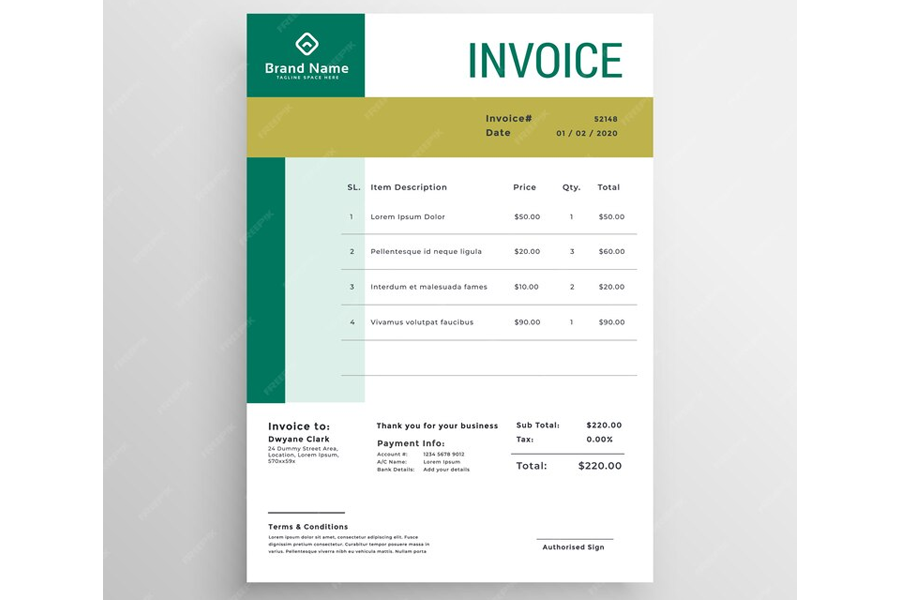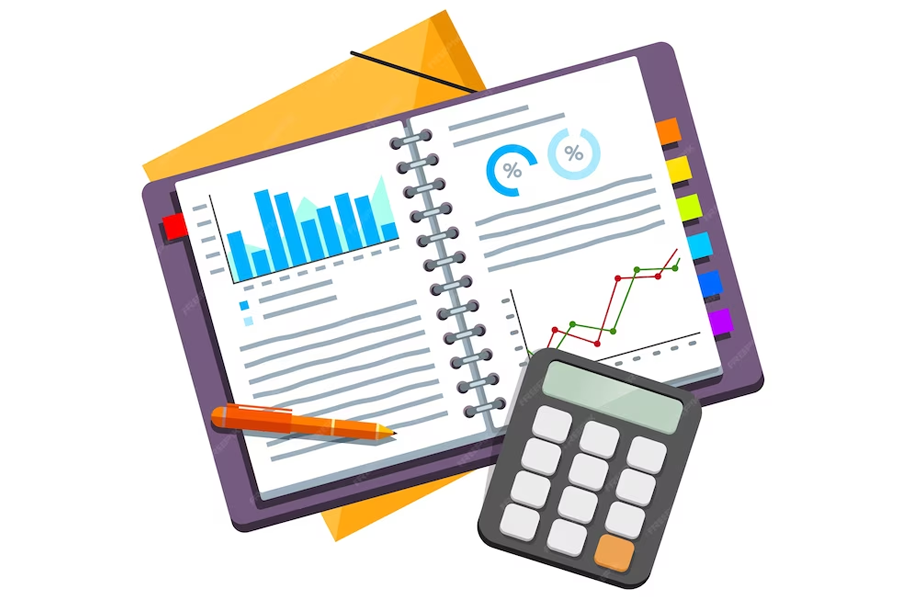Are you running a business in Indonesia? How have you been handling cost control? Have you left it to chance, or have cost control measures in place? We know it’s not easy, and we are not judging you, but you must keep those expenses in check. Why?
Because your goal as a business owner isn’t to spend the most money but to increase your profit margins. You need to cut unnecessary costs. This article will discuss some optimization techniques and allocation methods for cost control in your business.

What is Cost Control?
Cost control is about finding new ways to spend less money in your business to increase profit. The first step is financial budgeting, where you plan how much you’ll spend in different areas.
For example, let’s say you’re a coffee maker or chef whose budget on ingredients in February was 5,000,000 IDR a month but ended up spending 6,500,000 IDR. In this case, you need to know why you paid more than you budgeted and how to reduce it with the help of analysis tools.
One of the strategies you can use is to compare prices from different suppliers to find the best ingredient deals (not necessarily the cheapest). For example, if one supplier sells 1kg of ingredients at 1,000 IDR and 5kg at 5,000 IDR, another may sell 5kg at 4,500 IDR.
Another example of cost reduction measures is outsourcing some tasks like payroll. You can hire a freelancer instead of a full-time employee. This way, you can avoid dealing with employee turnover.
Indeed, cost control is about being smart. You don’t necessarily need to follow every strategy. Analyze your business and see how to save more to become profitable.

Cost Control Measures in E-Commerce
One of the perks of cost control is increasing the amount you can invest to grow your business. It also helps you gain more profits and fewer expenses. Earlier, we gave an example of a chef whose spending exceeded the budget.
The difference between the budgeted value and actual spending is variance. In the case of the chef, the variance was 1,500,000 IDR. You should perform a monthly variance analysis on the revenue and expense accounts. The lower the variance, the better.
The following are best practices to control costs in an online business.
Adopt Automation
Automation software is one of the best cost-minimization tactics for handling routine tasks. The best part is that it doesn’t save money and creates efficiency optimization.
Simply, it reduces human error and saves costs by reducing the number of talents you need to hire and the time you will spend correcting human error. Areas you can automate include customer communications and payroll.
Reduce Cart Abandonment Rate
Cart abandonment is equal to a loss of potential profit for your business. What happens if there is more than one, and it keeps happening? It means you are losing more chances of making more money for your business.
One of the best options for dropping the cart abandonment rate is to set up a seamless and quick checkout process with small steps from start to finish.
It should be something like this:
- Cart Page: Review Cart ➡️ Proceed to Checkout
- Checkout Page: Enter Shipping Information ➡️ Select Shipping Method ➡️ Enter Payment Information
- Order Summary Page: Review Order Summary ➡️ Apply Coupons or Discounts ➡️ Place Order
- Post-Order Confirmation: Wait for Confirmation ➡️ Track Order (Optional)
Ensure you integrate a payment gateway that accepts multiple payment methods like credit cards and Apple Pay.
Next, automatically send cart abandonment emails to get shoppers to return. Show delivery estimates and remove elements of uncertainties. But let them know the causes of delay, if any.
Nearly 70% of visitors abandon their carts at check out. It’s alarming, but you can drop the number if you implement the framework above.

Reduce Your Return Rates
Returns are bad for business, so you need performance analysis to know the quality of your products, how you can improve them, and the quantity of damaged goods.
When returning products, you have to give a new product to the customer and account for the loss of damaged or poor-quality products. You also need to handle the new product’s shipping to the customer and the return of the other product.
The following optimization techniques will help reduce return rates to avoid extra expenses:
- Be clear about your offer, and don’t exaggerate features and benefits, whether your marketing message or product descriptions.
- Adopt post-order communication monitoring systems to keep communicating with customers so that they know you are trustworthy.
Lastly, use cost-effective systems and tracking mechanisms, such as prepaid return labels. They are labels generated after receiving a return request from the customer. This label usually contains the customer’s shipping address, the merchant’s return address, and a tracking number to fast-track the return process.
Lower Your Shipping Costs
Shipping fees are essential in helping customers decide whether to proceed with payment, so consider using cheaper and more reliable shipping options.
Here is how to do this:
- Partner with a delivery or shipping service for bulk deliveries at a discount.
- Negotiate rates with your shipping carriers, especially if you are a repeat customer.
- Keep in mind that regional parcel carriers provide cheaper and faster services than national carriers.
Lastly, you should invest in your inventory management system so that warehousing and shipping save costs and not the opposite. Have warehouses closer to where your customers are or are close to delivery or a courier environment with no extra delivery costs before shipping.
Effective Expense Management Strategies
Have your business expenses been on the roof lately?
You should consider cutting costs using these expense management best practices:
- Automate Expenses Data Entry: Companies now use cloud-based tools like DOKKA to record expenses automatically. Think of a robot or AI tool that records all your spending information in one place without you having to type it out.
- Use Digital Receipts: Gone are the days you track expenses with paper receipts. Start taking pictures of your expense receipts.
- Enforce Expense Policies: Create rules and regulations concerning the organization’s use of money. Outline when anyone can request for or spend it.
- Currency Conversion: If you have suppliers overseas, you must pay attention to the conversion rate from your currency to their currency, impacting your expenses and business costs.
Use software that searches for reporting mistakes in your expense records, like Xero and QuickBooks. These are software for checking even typos and discrepancies you may have missed.
If you use a modern e-commerce platform, it will give you different tools for tracking your income and expenses, thus helping you make informed financial decisions.

Techniques to Reduce Operational Spending
Operational costs are essential for running a business, but how much you spend depends on how smart you are at cutting costs.
The following are solutions that can help trim expenses without reducing the quality of work:
- Work Remotely: Remote work is no longer news; many businesses work from home without spending on traditional office setups. However, you must consider investing in a workspace at home to ensure productivity.
- Rent Spaces: Rent space for menial tasks that need a week or a month to complete. It pays to rent for short-term use.
- Pause Hiring: Think twice before you hire, especially if you don’t need in-house talent or don’t urgently need to expand your team. Instead, consider outsourcing to freelancers or contract workers.
Some operational costs could be wasteful, but you may not realize them. Pay attention to workflows and how much time it costs to get work done. In some cases, you need to save time and spend money to save money in the long run.
Tools for Analyzing Cost Control
Ernst Harting, Jo Bos, and Marlet Hesslelink talked about the instruments for cost control in Project-Driven Creation. They referred to tools for cost control as instruments.
Let’s see them below:
- Cost Estimate (The Initiation Phase): At the beginning stage of any project, you need cost estimates to determine whether the project is financially feasible. For example, you could use past data to estimate costs. Examples of tools to use for cost estimates are COCOMO (Constructive Cost Model) and SEER-SEM (Software Estimation and Evaluation of Resources). They use historical data and the current project to estimate costs.
- Budget (Planning Phase): After confirming the project’s feasibility, you need to convert estimates into an actual budget. A budget is more detailed and more relatable. For example, owning a restaurant means budgeting for the kitchen, cooking utensils, food ingredients, and packaging; your budgeting should have a breakdown. Use tools like Microsoft Project and Asana to budget.
- Cost Monitoring (Execution phase): At this stage, you are to ensure that the spending aligns with the budget. This helps identify and mitigate overspending. For example, using tools like Expensify or Xero to track your expenses helps identify discrepancies and find the root cause.
- Financial Evaluation (Closing Phase): This is the stage where the project is put to a close. You have to check if you achieved the financial targets for the project. For example, did the project yield the intended ROI? Use tools like Tableau and Power BI to find answers.
Let’s remember that cost control isn’t just about numbers and spreadsheets — it’s about making informed decisions that shape the success of our projects. As Ernst Harting, Jo Bos, and Marlet Hesslelink pointed out, these tools are like instruments in an orchestra, each playing a crucial role in keeping our projects on track.

Mastering Financial Budgeting for Success
Budgeting is straightforward when it comes to personal finances compared to business.
Below, we have outlined some strategies to help you become a pro at budgeting:
- Maintain a Database: Our first strategy is to record all inflow and outflow of cash in your business. A database is a structured collection of related records organized into tables, meaning there should be a database for finance, operations, and any other department.
- Embrace Analytics: Data analytics tools help business owners make decisions through factual data and numbers. Paying attention to your expensive trends and patterns can help you know areas to cut costs and make better budgeting plans. You can also predict future trends thanks to analytics tools.
- Zero-Based Budgeting System: Our last strategy involves you starting the new business year with a fresh budget every year instead of manipulating the previous year’s budget. Starting from zero and making careful considerations, ensure you only include essential things.
Also, consider the possibility of including everyone in the budget planning. This way, everyone will be in sync and understand the direction toward the financial goal.
Monitoring Systems: Ensuring Fiscal Discipline
This refers to keeping an eye on the financial activities of a company. We discuss monitoring systems and tools or ways to track cash inflow and outflow. The following are action tips to help:
- Make a Budget: Create a plan for how much you want to spend in the different areas of your business. Knowing what you can afford is essential.
- Check Your Cash Flow: Pay attention to your cash flow and balance. Finances with business can be tricky. One day, you look like you have become a millionaire, and the next, you are pleading with your employees to postpone their pay. That’s why you need to know about cash flow.
- Set Money Goals: You should have money goals like making 1000 monthly sales and 5000 leads.
These tips may look too easy, but they are not that simple. Set goals for expenses and revenue and track how much is coming in and leaving. This way, you can ensure fiscal discipline.
Using Software for Cost Efficiency
It’s almost impossible to run a business without the use of technology. Not to mention when cutting costs and improving profits. Technology will make it easy, help you track expenses, and find areas needing discipline.
The following are some ways businesses can use technology to save money:
- Automating Manual Tasks: Rather than doing repetitive tasks with human resources, why not let software or robots handle them? Use software like Odoo or robotics systems like Kiva Systems.
- Using Cloud Computing: Moving your data to the cloud saves money on hardware and infrastructure. For example, a small e-commerce startup can use cloud-based software like Salesforce or HubSpot CRM to manage customer relationships.
- Embracing Remote Work: Allow your employees to work from home so your business can save money on office space and utilities. Through technology tools like Microsoft Teams and project management software like Trello, it is easy to work remotely with your team.
You can use Tableau or Microsoft Power BI to analyze and find valuable data to save money. For instance, a retailer can analyze sales data using software tools to see which products are most profitable and focus on those.

Control Audits For Financial Prudence
Control audits are practices for ensuring sound financial management. Without a control audit, you can’t say you manage your finances or control costs. It is usually a comprehensive assessment of your finances and system to identify strengths, weaknesses, and areas for improvement.
For example, when a company performs a financial statement audit, it checks its financial statements to ensure they are accurate and compliant with accounting standards. At the end of the review, the auditor will send an audit opinion indicating whether the financial statements are correct and fair for the company’s economic performance.
Frequently Asked Questions
Which strategy would most help an e-commerce business?
The following strategies would mainly help an ecommerce business drive sales and profits:
- Cost control measures like reducing shipping fees and using automation;
- Adopting marketing strategies like email marketing, social media advertising, and content marketing;
- Segmenting your customers.
How is e-commerce cost-effective?
It’s cost-effective because you don’t need to spend extra money on a brick-and-mortar store, rent, utilities, staffing, maintenance, and other overhead expenses.
What are cost-effective strategies?
Cost-effective strategies ensure you can reduce costs without lowering the quality of your work, product, or service.